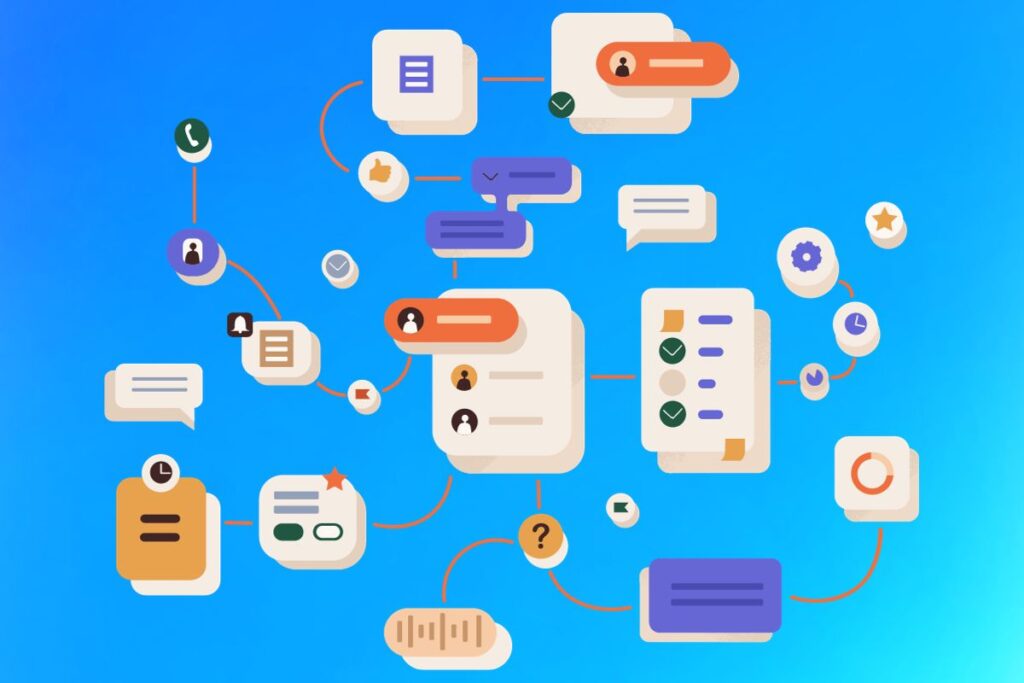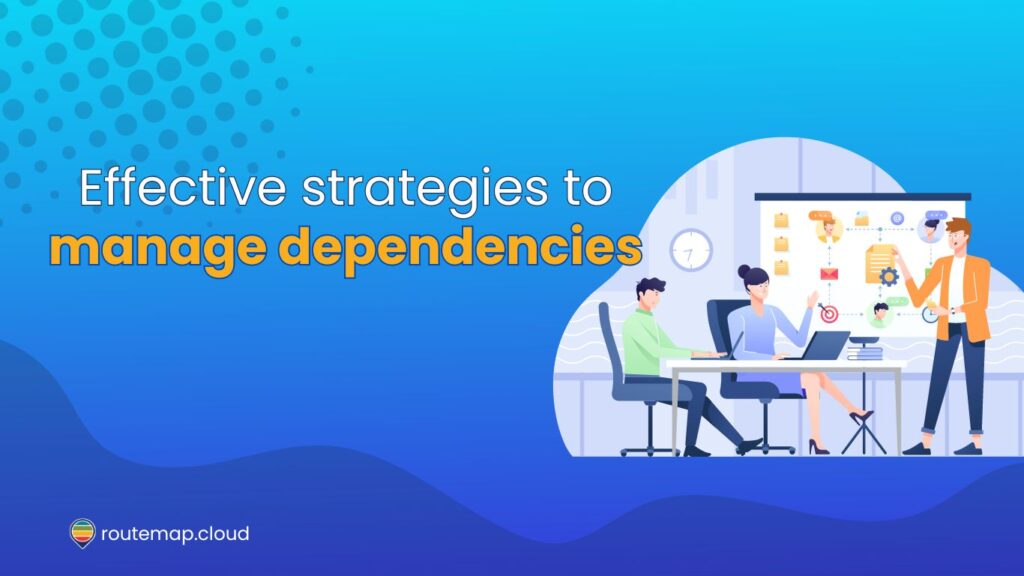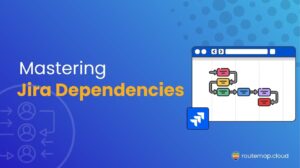Agile project management thrives on the principles of flexibility, iteration, and incremental delivery. Yet, these principles are often tested by the ability to manage dependencies.
When tasks are interdependent, they can create choke points in the workflow that disrupt the rhythm of Agile teams. Managing these dependencies is not just about identification but also about employing strategies that ensure smooth progress despite the inevitable interlinkages.
This article will go through the various approaches that Agile teams can adopt to effectively manage dependencies, ensuring that the workflow remains uninterrupted and productive.
Table of Content
- What are dependencies?
- Types of dependencies in agile
- How to manage dependencies in Agile effectively
- 1. Precise identification of dependencies
- 2. Strategic prioritization to manage dependencies
- 3. Streamlined communication and collaboration
- 4. Proactive dependency resolution
- 5. Manage dependencies with accurate monitoring and adjustment
- 6. Dependency mitigation through agile practices
- 7. Formalizing external dependencies
- 8. Continuous improvement to manage dependencies
- Final thoughts on strategies to manage dependencies
What are dependencies?
Dependencies in agile are elements within a project that rely on each other for progress or completion. They are the connections between tasks, features, user stories, or other work items where one cannot start or finish until another has completed.

These dependencies can affect scheduling, prioritization, and the flow of value through the delivery process.
In the context of agile, dependencies are significant because they can create bottlenecks and delay the delivery of potentially shippable increments. Therefore, agile methodologies strive to minimize dependencies to improve flow and adaptability.
However, it is essential to manage dependencies carefully to maintain the flexibility that Agile promotes when such dependencies exist.
Types of dependencies in agile
Dependencies in Agile can be quite specific and detailed, affecting various aspects of project planning and execution. Here’s a breakdown of some types of dependencies that agile teams often encounter in their project.
1. Technical dependencies
Technical dependencies are critical in Agile projects and require careful management due to their potential to impact various parts of the development process.
- Code dependencies arise when the development of particular functionalities is contingent upon the completion of shared underlying code or components, often necessitating a specific order of development tasks.
- System dependencies underscore the need for foundational system-level elements, like databases or server infrastructures, to be operational for other features to function properly. As a result, this can significantly influence the project timeline and resource allocation.
- Architectural dependencies involve the software architecture’s foundational structures where the development of certain architectural components is a prerequisite for subsequent features. That will rely on that architecture, impacting both the design and development phases.
2. Business/Functional dependencies
Business or Functional dependencies in agile highlight the intersection of development work with business objectives and user experiences. Workflow dependencies are characterized by the need to develop features in a sequence that is congruent with established business processes or user workflows. As a result, they ensure that the end product aligns with operational realities or market expectations.

On the other hand, Feature Set dependencies occur when a group of features provides a distinct business capability. Therefore, they must be developed and released in unison to deliver full functionality to the user.
Compliance dependencies denote the obligatory adherence to regulatory and standardization requirements, influencing the prioritization and implementation sequence of features.
3. Sequential task dependencies
Sequential Task Dependencies are pivotal in Agile planning and execution, dictating the order and timing of task completion.
- Finish-to-Start (FS) dependencies mandate that a successor task can only be initiated once its predecessor has concluded, forming the backbone of traditional project scheduling.
- Start-to-Start (SS) dependencies allow for the concurrent initiation of tasks, facilitating parallel processing where feasible.
- Finish-to-Finish (FF) dependencies synchronize the completion of interconnected tasks, which is critical for coordinating complex integrations.
- Start-to-Finish (SF) dependencies, though less common, establish a dependency where the completion of one task is dependent on the commencement of another, often utilized in overlapping project phases.
4. Resource dependencies
Resource dependencies in Agile spotlight the limitations and constraints around the availability and utilization of project resources.
- Skill-based dependencies emphasize the necessity of specific expertise, available through particular team members, for certain tasks—often leading to critical-path scheduling based on personnel.
- Equipment dependencies involve some particular tools or equipment, which may be scarce or shared among multiple tasks, necessitating strategic scheduling to avoid conflicts.
- Environmental dependencies refer to the need for specific conditions or settings, such as software testing platforms or deployment environments. Besides, these dependencies must be prepared and managed to enable certain development activities.
5. Schedule dependencies
Schedule dependencies are integral to the timing and orchestration of agile project tasks.
For example, Milestone dependencies hinge tasks on reaching predefined milestones within the project’s timeline, serving as checkpoints for progress and alignment with goals. Additionally, Release dependencies align the development work with predetermined release windows or deployment cycles, essential for ensuring that the work is ready for delivery at the right time.
Event-based dependencies tie project tasks to external events like marketing launches, trade shows, or seasonal occurrences. They require synchronization with activities beyond the project’s immediate control.
6. External dependencies
External dependencies are those factors outside the immediate Agile team’s control but which have a significant impact on the project.
- Vendor or Supplier dependencies entail reliance on external providers for essential components or services, where delays or issues can cascade through the project timeline.
- Cross-team dependencies arise when deliverables from other teams within the organization are necessary to complete tasks, necessitating cross-functional coordination and communication.
- Customer dependencies reflect the need for customer feedback or actions to proceed with certain development aspects, often seen in customer-centric development approaches.
7. Organizational dependencies
Organizational dependencies in agile encompass factors related to the broader organizational context in which the project is executed to manage dependencies. Process dependencies involve tasks that are contingent on organizational processes or approvals, potentially introducing delays and additional layers of complexity.
Meanwhile, Policy dependencies necessitate adherence to organizational policies or strategic decisions, which can affect how and when tasks are executed. Whereas Budgetary dependencies reflect the financial considerations within a project, where the availability of funds or budgetary approval can directly influence the ability to progress with certain tasks.
8. Data dependencies
They highlight the crucial role of information management in agile projects.
Data Availability dependencies occur when tasks necessitate specific data to be collected, processed, or made available before they can commence, thus impacting the sequence and timing of data-dependent activities.
Meanwhile, Data Processing dependencies involve the transformation or processing of data in a manner preceding the utilization of that data in subsequent tasks. And they emphasize the interconnectedness of data management and project workflows.
How to manage dependencies in Agile effectively
Managing dependencies in an Agile context requires a nuanced approach that blends early identification with continuous management and communication.
Here are some great strategies that you can follow to effectively manage dependencies.
1. Precise identification of dependencies
The groundwork for managing dependencies lies in their early detection. This can be achieved through meticulous dependency mapping exercises during backlog refinement sessions, where tasks are scrutinized for potential dependencies.
These sessions serve as a preemptive strike, unearthing hidden inter-task relationships that could later surface as impediments. Complementing this approach with routine dependency audits during sprint retrospectives ensures that dependencies are not only identified but also continuously monitored and reassessed.
2. Strategic prioritization to manage dependencies
Once dependencies are identified, they must be ordered by importance. Critical path analysis becomes a key technique here, enabling teams to determine which tasks are vital for the project timeline and should, therefore, be prioritized.
A risk-based prioritization framework can also be applied, where dependencies are weighted according to the risk they pose in terms of impact, probability, and the complexity of mitigation strategies.
3. Streamlined communication and collaboration
The secret to effectively managing dependencies in agile is rooted in proactive communication and collaboration. By instituting regular cross-team planning meetings—such as the Scrum of Scrums—teams create a forum for discussing and addressing interdependencies.
Moreover, employing real-time dependency tracking through project management tools ensures that every team member is aware of current dependencies and their statuses, fostering a culture of transparency and collective accountability.
4. Proactive dependency resolution
In dealing with the actual resolution of dependencies, agile teams often leverage techniques like feature toggling, which allows work to progress on a feature in a non-blocking manner.
The practice of swarming, where a team collectively focuses on resolving a blocking dependency, can also expedite the resolution process and maintain project momentum.
5. Manage dependencies with accurate monitoring and adjustment
To manage dependencies is an ongoing task, and it demands constant vigilance. Agile project dashboards provide an at-a-glance view of dependencies and their impact across the project, allowing for timely interventions.
Dynamic backlog refactoring, driven by the evolving landscape of dependencies, ensures that the backlog remains a true reflection of the current state of the project, with work items reordered to accommodate newly surfaced interdependencies.
6. Dependency mitigation through agile practices
Adopting Agile-specific practices such as Test-Driven Development (TDD) can also significantly aid in managing dependencies by highlighting issues early in the development process. Furthermore, embracing incremental refactoring of code and architecture can prevent the accumulation of technical debt and reduce the complexity of dependencies over time.
7. Formalizing external dependencies
For dependencies that extend beyond the team’s immediate influence, formal agreements such as Service Level Agreements (SLAs) are indispensable. These contracts with third-party vendors clarify expectations and establish agreed-upon timelines, which are critical when the project depends on external deliverables.
Integrating these external schedules into the project’s management tools can provide much-needed visibility and control.
8. Continuous improvement to manage dependencies
Finally, managing dependencies is not a static process but one that benefits greatly from continuous improvement. Retrospective sessions focused on dependency challenges offer valuable insights that can refine future strategies.
Regular feedback loops between teams are also essential in cultivating a learning environment where successful strategies are shared and adopted.
Final thoughts on strategies to manage dependencies
Managing dependencies in Agile necessitates a proactive and structured approach that extends beyond mere identification. It encompasses a prioritization cycle, continuous communication, strategic resolution, and iterative improvement.
By embedding these practices within their workflows, teams can effectively navigate through the complexities of task interdependencies, ensuring a continuous and efficient delivery pipeline.
Through vigilant management and a collaborative mindset, Agile teams can transform potential obstacles into manageable aspects of the workflow, maintaining the project’s momentum and safeguarding its success.






